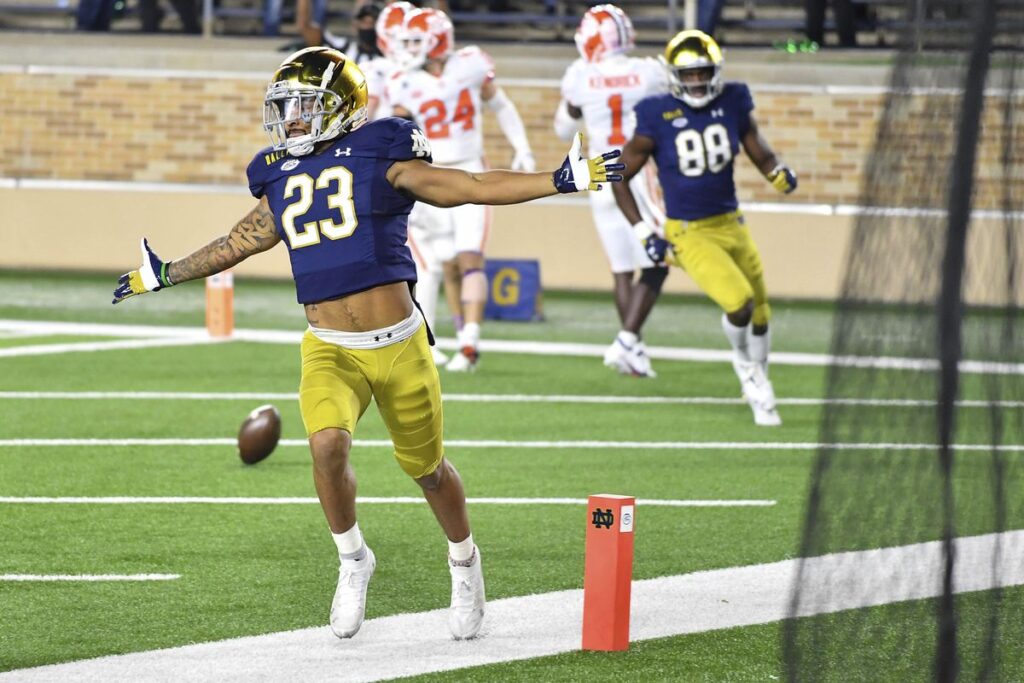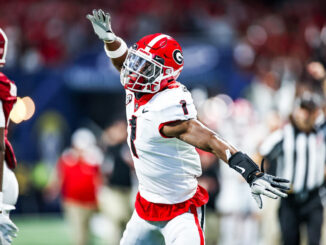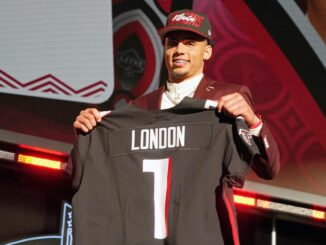The NFL game is changing and so is the running back position. Teams are beginning to move away from the traditional bell-cow back and looking for a committee with complimentary skillsets. This list shows as much, and there is a wide array of skillsets on offer in the 2022 class. Here are my top five draft-eligible running backs ahead of the 2021 college football season.
1. Breece Hall – Iowa State (6-1, 215, Junior)

Hall is one of the biggest names in college football, and deservedly so. He was almost unstoppable in 2020 and led the country with 1,562 rushing yards. What separates him from most other running backs is his patience and vision. Hall runs like a seasoned veteran and has the uncanny ability to find daylight and maximise yardage on every carry. He combines this with excellent short area quickness and displays good contact balance. Combined with his NFL-ready size, it is easy to see why so many already regard Hall as the clear frontrunner in this running back class. If he can show some improvement as a pass catcher in 2021 then he will more than likely be the first running back off the board next April.
2. Kyren Williams – Notre Dame (5-9, 195, rs-Sophomore)

Williams exploded onto the scene last season as a redshirt freshman. He racked up 1,124 yards, averaged 5.3 per carry, and was voted ACC Rookie of the Year. Williams is a fantastic athlete, with the speed and quickness to be a home run threat every time he touches the ball. What elevates him above most other small backs is his physicality. He runs like a back who is 20lbs bigger and rarely goes down on first contact. He is also one of the best third down backs in college football, with good hands and exceptional pass protection. If he can rectify his ball security concerns – five fumbles on 211 carries – then he will be firmly in contention for RB1 next April.
3. Jerrion Ealy – Ole Miss (5-9, 180, Junior)

A former five-star recruit, Ealy committed to Ole Miss ahead of Alabama and Clemson in order to play both football and baseball. It is easy to see why he was garnered so much interest out of high school. Ealy is one of the most dynamic and elusive runners in the country, with quick twitch and sub 4.4 speed. In 2020 he ran for 745 yards on 147 carries, with another 155 yards as a receiver. He is adept at making defenders miss in space, with his 0.27 forced missed tackles per attempt ranking third in the SEC. He also ranked second with an impressive 18.4% breakaway run rate. His lack of size won’t suit for every scheme at the next level, but he has a very high ceiling in the right offense.
4. Isaiah Spiller – Texas A&M (6-1, 225, Junior)

Spiller has been the Aggies’ starter since his freshman season and is the picture of consistency in the backfield. After rushing for 957 yards as a true freshman, he broke the 1,000 yard mark as a sophomore in 2020. Spiller offers NFL-level physicality and is one of the toughest backs to bring down in this draft class. He isn’t just a bruiser though. Spiller displays smooth footwork and the vision to navigate congested running lanes successfully. His short area quickness is impressive for a back of his size and this gives him a very well-rounded skillset. The biggest weakness to Spiller’s game at this point is something out of his control – his long speed. Just eight of his 188 carries in 2020 went for 20+ yards, and there will be concerns about whether he can be a home run threat in the NFL.
5. Tyler Allgeier – BYU (5-11, 220, rs-Junior)

Zach Wilson was the main attraction at BYU last season, but he had one of the most dominant running backs in the country next to him. Allgeier was starting at running back for the first time, having played mainly as a linebacker in 2019. The transition could not have been smoother. He averaged an astonishing 7.6 yards per carry, with 4.72 of those coming after contact. Unlike a lot of bigger backs, Allgeier offers legitimate quickness and has good long speed for his size. His 21.5% explosive run rate leads all returning running backs. The main question with Allgeier is how much of his production was the result of BYU’s dominant offensive line. With most of that line gone, it will be interesting to see if he can replicate these numbers again in 2021.


